Definition
Thyroid nodules are small, abnormal growths or lumps that form within the thyroid gland, a butterfly-shaped gland located in the front of the neck, just below the Adam’s apple. These nodules can be solid or fluid-filled and may vary in size, ranging from tiny to several centimeters in diameter. In many cases, thyroid nodules are non-cancerous (benign) and do not cause any noticeable symptoms. They are often discovered incidentally during routine medical exams or imaging tests. However, some nodules can be problematic, leading to hormone imbalances, enlargement of the thyroid gland (goiter), or potential malignancy. Therefore, it is essential to evaluate thyroid nodules through further diagnostic procedures, such as ultrasound, fine-needle aspiration (FNA) biopsy, or other imaging techniques, to determine their nature and guide appropriate treatment if necessary.
The exact cause is not always clear, but certain risk factors may contribute to their development, including age (more common in older individuals), gender (more common in women), iodine deficiency, family history of thyroid nodules or thyroid cancer, and exposure to radiation. While most thyroid nodules are harmless and require no specific treatment, those causing symptoms or showing signs of potential malignancy may necessitate medical intervention. Treatment options may include thyroid hormone therapy to regulate hormone levels, radioactive iodine therapy to shrink nodules, or surgical removal in cases of suspected cancer or significant discomfort.
Types
Different types of thyroid nodules include:
Thyroid cysts: only contain liquid inside of them and are usually benign. These typically do not impact thyroid function. When they are causing discomfort, they can be drained with a needle, surgically removed, or ablated, or removed, using minimally invasive techniques.
Solid thyroid nodules: the majority of thyroid nodules, and most of these do not harbor cancers. These typically do not impact thyroid function and are evaluated by ultrasound.
Overactive ‘toxic’ thyroid nodules: Only a minority of thyroid nodules make extra thyroid hormone, and these are called ‘toxic adenomas’. Toxic adenomas are usually benign, and the options for treating these are similar to other causes of hyperthyroidism.
Epidemiology
It is present in approximately 4 to 7 percent of the population, which translates to around 10 to 18 million individuals. However, when incidental nodules found during ultrasonography are taken into account, the prevalence increases significantly to about 19 to 67 percent. Research indicates that about 30 percent of individuals between 19 to 50 years old have incidental nodules detected through ultrasonography. Moreover, over half of the studied thyroid glands contain one or more nodules, with only about one in 10 being detectable by touch.
Among solitary nodules, around 23 percent are actually dominant nodules within a multinodular goiter. The occurrence of thyroid carcinoma in palpable nodules is approximately 5 to 10 percent. In 2001, it was estimated that out of the 1,268,000 newly diagnosed cancers in the United States, around 19,500 cases were expected to be of thyroid origin, leading to 1,300 deaths attributed to thyroid cancer. It is more prevalent in women, being four times more common than in men. Additionally, they are more frequently observed in areas with iodine deficiency. When individuals are exposed to ionizing radiation, thyroid nodules develop at a rate of 2 percent annually.
Pathophysiology of Thyroid Nodules
Thyroid nodules can result from various underlying conditions, each with its own distinct pathophysiology. The majority of thyroid nodules are benign macrofollicular nodules, which can be either monoclonal adenomas or colloid nodules within a multinodular goiter. In multinodular goiters, the nodules arise from relatively monoclonal cells replicating in a nodular pattern. Follicular neoplasms present a diagnostic challenge because they closely resemble follicular carcinomas, but they lack vascular or capsular invasion, which helps differentiate them.
Radiation exposure is a well-known factor linked to tumorigenesis, particularly in radiation-sensitive organs like the thyroid. Radiation can induce various somatic mutations that increase the risk of cancer. Children face a higher risk of thyroid cancer after radiation exposure compared to adults, likely due to the greater proliferative activity of thyroid tissue in younger individuals. Thyroid malignancies associated with ionizing irradiation have been found to have RET proto-oncogene translocations. Follicular adenomas, which develop following irradiation, have been found to exhibit RET/PCT translocations.
Symptoms of Thyroid Nodules
It do not cause any symptoms. Some thyroid nodules show up as a painless lump in the neck that you can feel or see. It usually move up and down with swallowing.
When thyroid nodules become large (>4 cm or 1.5 in) they may cause symptoms by pressing on the airway or esophagus. These are also called “compressive symptoms.” Compressive symptoms include:
- Discomfort with swallowing
- Discomfort when lying down in certain positions
- A tight feeling when wearing a collared shirt
- Noisy breathing at night
- Food getting stuck in the throat
- Shortness of breath when exercising and difficulty breathing.
Sometimes it can produce excess thyroid hormone. Excess thyroid hormone, also called hyperthyroidism, can cause the following signs and symptoms:
- Heat intolerance (feeling hot when others do not)
- Fatigue
- Anxiety or swings in emotions/mood
- Weakness
- Tremor
- Palpitations or feeling of an irregular heartbeat
- Increased sweating
- Weight loss despite normal or increased appetite
- Thinning hair
Causes of Thyroid Nodules
It’s not always clear why a person gets thyroid nodules. Several medical conditions can cause them to form. They include:
- Thyroiditis: This is chronic inflammation of the thyroid. One type of thyroiditis is called Hashimoto’s disease. It’s associated with low thyroid activity (hypothyroidism).
- Iodine deficiency: A diet that lacks iodine can result in thyroid nodules. This is uncommon in the U.S., since iodine is added to many foods.
- Thyroid adenoma: This is an unexplained overgrowth of thyroid tissue. Most adenomas are harmless, but some produce thyroid hormone. This leads to an overactive thyroid (hyperthyroidism).
- Thyroid cancer: Most thyroid nodules aren’t cancer, but some can be.
Risk factors
Several risk factors can increase the likelihood of developing thyroid nodules. These risk factors include:
- Age: It is more common as people age, especially after the age of 60.
- Gender: Women are more likely to develop thyroid nodules than men.
- Iodine deficiency: A lack of sufficient iodine in the diet may contribute to the formation of thyroid nodules.
- Family history: If you have a family history of thyroid nodules or thyroid cancer, your risk may be higher.
- Radiation exposure: Previous exposure to radiation, especially during childhood, increases the risk of thyroid nodules.
- Hashimoto’s thyroiditis: This autoimmune condition, which causes inflammation of the thyroid gland, can lead to the development of nodules.
- Obesity: Some studies suggest that obesity may be associated with an increased risk of thyroid nodules.
It’s important to note that having one or more risk factors doesn’t necessarily mean you will develop thyroid nodules. Conversely, some individuals without any risk factors may still develop nodules.
Complications
Complications include:
- Problems swallowing or breathing. Large nodules or a multinodular goiter can interfere with swallowing or breathing.
- Hyperthyroidism. Problems can occur when a nodule or goiter produces thyroid hormone, leading to an excess amount of the hormone in the body. Hyperthyroidism can result in weight loss, muscle weakness, heat intolerance, and anxiousness or irritability.
Potential complications of hyperthyroidism include an irregular heartbeat, weak bones and thyrotoxic crisis, a rare but potentially life-threatening intensification of signs and symptoms that requires immediate medical care.
- Problems related to thyroid nodule surgery. If your doctor recommends surgery to remove a nodule, you may need to take thyroid hormone replacement therapy for the rest of your life.
How to diagnosis thyroid nodules?
There are various tests that can be carried out to find the cause of your thyroid problem. These include:
- Thyroid Blood tests – This is usually the first test performed and is done to ensure that your thyroid is not over- or under-active.
- Ultrasound scan – This is painless and uses sound waves from a probe to examine the structure of the thyroid gland. It can establish the number and size of nodules in the thyroid and can give important information on the likelihood that a nodule is benign or a cancer.
- Fine needle aspiration cytology – This is where some cells are removed from a thyroid nodule using a thin needle. The cells are then examined under a microscope. There may be some discomfort, but the procedure is usually quite quick.
- X-rays – A CT scan (a special form of X-ray) may be performed to check the position of a retrosternal goitre in relation to the windpipe (trachea) and gullet (oesophagus).
- Nuclear medicine scan – This is a type of X-Ray that checks the size, shape, and position of the thyroid and detects areas that are over-active (‘hot’) or under-active (‘cold’).
Treatment
The treatment depends on their nature, size, and whether they cause any symptoms or complications. Here are the common treatment options:
Observation and Monitoring: If the thyroid nodule is small, benign (non-cancerous), and not causing any symptoms, the doctor may choose to monitor it over time through regular check-ups and imaging tests.
Hormone Replacement Therapy: If the nodule is causing hypothyroidism (underactive thyroid), the doctor may prescribe synthetic thyroid hormones to restore proper hormone levels and shrink the nodule.
Radioactive Iodine Therapy: This treatment is used for nodules that produce too much thyroid hormone (hyperthyroidism). Radioactive iodine is taken orally, and it selectively targets and destroys the overactive thyroid tissue, including the nodules.
Thyroid Hormone Suppression Therapy: For nodules that are not cancerous but continue to grow, the doctor may prescribe thyroid hormone medication to suppress the production of thyroid-stimulating hormone (TSH) and potentially slow the growth of the nodules.
Fine-Needle Aspiration (FNA) Biopsy: If the doctor suspects the nodule might be cancerous or uncertain of its nature, they may perform an FNA biopsy to collect a tissue sample for examination and diagnosis.
Surgery (Thyroidectomy): If the nodule is large, causing compression of nearby structures, suspicious for cancer, or causing significant symptoms, the doctor may recommend surgical removal of part (lobectomy) or all (total thyroidectomy) of the thyroid gland.
Ethanol Ablation (PEI): This minimally invasive procedure involves injecting ethanol (alcohol) directly into the nodule to shrink it. It is typically used for cystic or benign nodules.
The choice of treatment depends on various factors, including the nodule’s characteristics, the patient’s health status, and their preferences. It’s essential to discuss the available options and potential risks and benefits with a qualified healthcare professional to determine the most suitable treatment plan for each individual case.
Prevention of Thyroid Nodules
Preventing may not be entirely possible since some risk factors are beyond our control. However, you can adopt certain lifestyle habits that may help reduce the risk or promote thyroid health. Here are some simple points to consider:
- Iodine Intake: Ensure enough iodine in your diet from iodized salt, seafood, and dairy.
- Avoid Radiation: Minimize unnecessary exposure to radiation.
- Regular Check-ups: Have regular health check-ups and discuss thyroid concerns with your doctor.
- Quit Smoking: If you smoke, consider quitting to reduce thyroid risks.
- Healthy Diet: Eat a balanced diet with fruits, vegetables, whole grains, and lean proteins.
- Manage Stress: Practice stress-reduction techniques like meditation or yoga.
- Limit Goitrogens: Consume goitrogenic foods like cabbage and broccoli in moderation.
- Protect Your Neck: Wear protective gear in neck-risk environments.
- Limit Toxins: Minimize exposure to environmental toxins.
Remember, prevention doesn’t guarantee complete protection, but these habits can promote overall thyroid health. If you have concerns, consult your healthcare provider.
 Diseases Treatments Dictionary This is complete solution to read all diseases treatments Which covers Prevention, Causes, Symptoms, Medical Terms, Drugs, Prescription, Natural Remedies with cures and Treatments. Most of the common diseases were listed in names, split with categories.
Diseases Treatments Dictionary This is complete solution to read all diseases treatments Which covers Prevention, Causes, Symptoms, Medical Terms, Drugs, Prescription, Natural Remedies with cures and Treatments. Most of the common diseases were listed in names, split with categories.
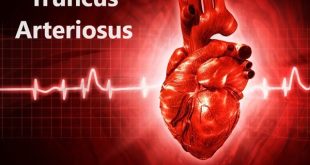

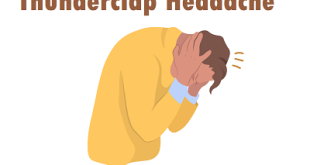
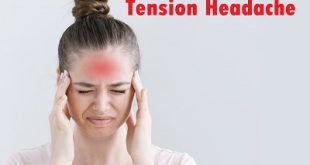

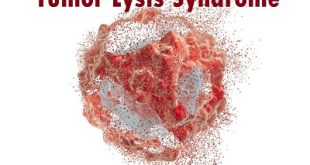
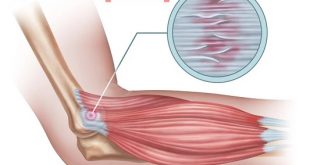

this is really helpful 👍👍